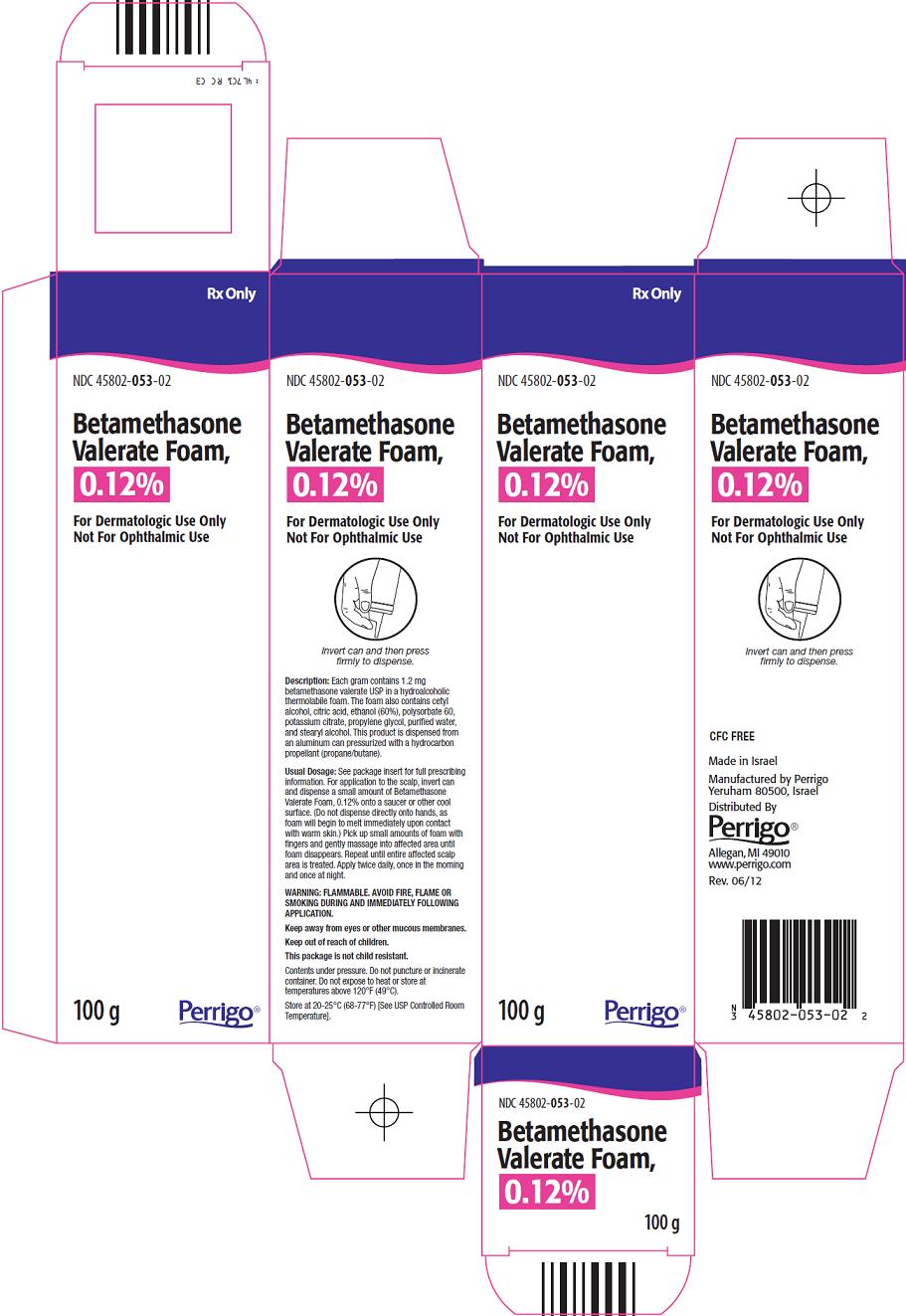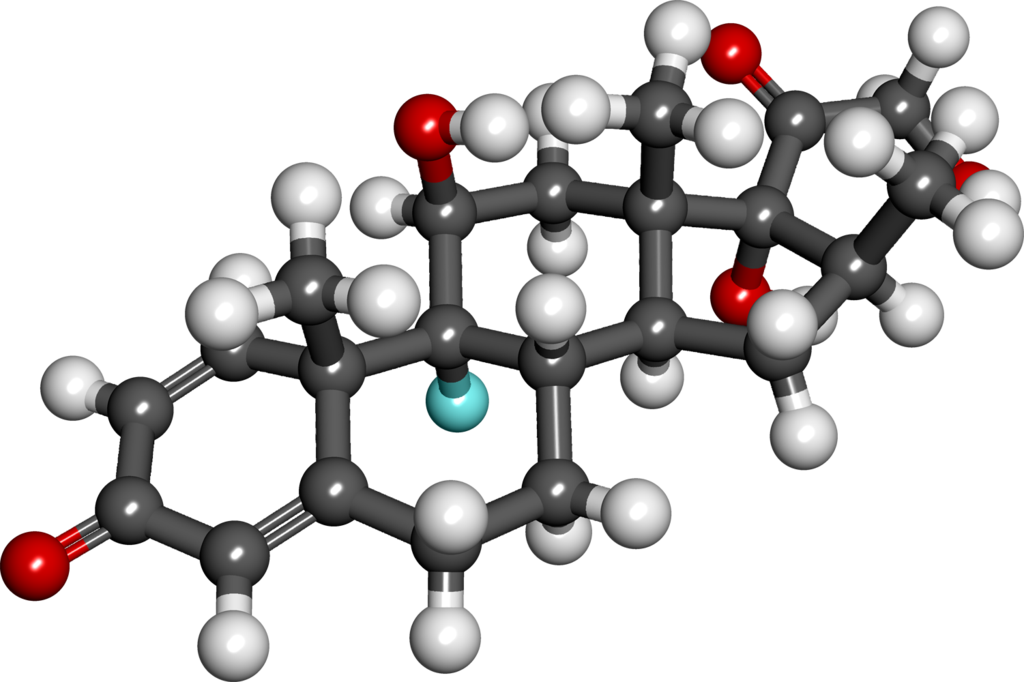Betamethasone valerate (aerosol)
Editor-In-Chief: C. Michael Gibson, M.S., M.D. [1]; Associate Editor(s)-in-Chief: Kiran Singh, M.D. [2]
Disclaimer
WikiDoc MAKES NO GUARANTEE OF VALIDITY. WikiDoc is not a professional health care provider, nor is it a suitable replacement for a licensed healthcare provider. WikiDoc is intended to be an educational tool, not a tool for any form of healthcare delivery. The educational content on WikiDoc drug pages is based upon the FDA package insert, National Library of Medicine content and practice guidelines / consensus statements. WikiDoc does not promote the administration of any medication or device that is not consistent with its labeling. Please read our full disclaimer here.
Overview
Betamethasone valerate (aerosol) is a corticosteroid that is FDA approved for the treatment of inflammatory and pruritic manifestations of corticosteroid-responsive dermatoses of the scalp. Common adverse reactions include paresthesia, pruritus, acne, alopecia, conjunctivitis, irritation, dryness, folliculitis, acneiform eruptions, hypopigmentation, perioral dermatitis, allergic contact dermatitis, secondary infection, skin atrophy, striae, and miliaria.
Adult Indications and Dosage
FDA-Labeled Indications and Dosage (Adult)
Indications
- Betamethasone Valerate Foam, 0.12% is a medium potency topical corticosteroid indicated for relief of the inflammatory and pruritic manifestations of corticosteroid-responsive dermatoses of the scalp.
Dosage
Note: For proper dispensing of foam, can must be inverted.
- For application to the scalp invert can and dispense a small amount of Betamethasone Valerate Foam, 0.12% onto a saucer or other cool surface. Do not dispense directly onto hands as foam will begin to melt immediately upon contact with warm skin. Pick up small amounts of foam with fingers and gently massage into affected area until foam disappears. Repeat until entire affected scalp area is treated. Apply twice daily, once in the morning and once at night.
- As with other corticosteroids, therapy should be discontinued when control is achieved. If no improvement is seen within 2 weeks, reassessment of the diagnosis may be necessary.
- Betamethasone Valerate Foam, 0.12% should not be used with occlusive dressings unless directed by a physician.
Off-Label Use and Dosage (Adult)
Guideline-Supported Use
There is limited information regarding Off-Label Guideline-Supported Use of Betamethasone valerate (aerosol) in adult patients.
Non–Guideline-Supported Use
There is limited information regarding Off-Label Non–Guideline-Supported Use of Betamethasone valerate (aerosol) in adult patients.
Pediatric Indications and Dosage
FDA-Labeled Indications and Dosage (Pediatric)
There is limited information regarding FDA-Labeled Use of Betamethasone valerate (aerosol) in pediatric patients.
Off-Label Use and Dosage (Pediatric)
Guideline-Supported Use
There is limited information regarding Off-Label Guideline-Supported Use of Betamethasone valerate (aerosol) in pediatric patients.
Non–Guideline-Supported Use
There is limited information regarding Off-Label Non–Guideline-Supported Use of Betamethasone valerate (aerosol) in pediatric patients.
Contraindications
- Betamethasone Valerate Foam, 0.12% is contraindicated in patients who are hypersensitive to betamethasone valerate, to other corticosteroids, or to any ingredient in this preparation.
Warnings
FLAMMABLE. AVOID FIRE, FLAME OR SMOKING DURING AND IMMEDIATELY FOLLOWING APPLICATION.
KEEP OUT OF REACH OF CHILDREN.
- Contents under pressure. Do not puncture or incinerate container. Do not expose to heat or store at temperatures above 120°F (49°C).
Adverse Reactions
Clinical Trials Experience
- The most frequent adverse event was burning/itching/ stinging at the application site; the incidence and severity of this event were as follows:

- Other adverse events which were considered to be possibly, probably, or definitely related to Betamethasone Valerate Foam, 0.12% occurred in one patient each; these were paresthesia, pruritus, acne, alopecia, and conjunctivitis.
- The following additional local adverse reactions have been reported with topical corticosteroids, and they may occur more frequently with the use of occlusive dressings. These reactions are listed in an approximately decreasing order of occurrence: irritation, dryness, folliculitis, acneiform eruptions hypopigmentation, perioral dermatitis, allergic contact dermatitis, secondary infection, skin atrophy, striae, and miliaria.
- Systemic absorption of topical corticosteroids has produced reversible hypothalamic-pituitary-adrenal (HPA) axis suppression, manifestations of Cushing’s syndrome, hyperglycemia, and glucosuria in some patients.
Postmarketing Experience
There is limited information regarding Postmarketing Experience of Betamethasone valerate (aerosol) in the drug label.
Drug Interactions
There is limited information regarding Betamethasone valerate (aerosol) Drug Interactions in the drug label.
Use in Specific Populations
Pregnancy
Pregnancy Category (FDA): Pregnancy Category C -
- Corticosteroids have been shown to be teratogenic in laboratory animals when administered systemically at relatively low dosage levels. Some corticosteroids have been shown to be teratogenic after dermal application in laboratory animals. There are no adequate and well-controlled studies in pregnant women. Therefore, Betamethasone Valerate Foam, 0.12% should be used during pregnancy only if the potential benefit justifies the potential risk to the fetus.
- Drugs of this class should not be used extensively on pregnant patients, in large amounts, or for prolonged periods of time.
- Australian Drug Evaluation Committee (ADEC) Pregnancy Category
There is no Australian Drug Evaluation Committee (ADEC) guidance on usage of Betamethasone valerate (aerosol) in women who are pregnant.
Labor and Delivery
There is no FDA guidance on use of Betamethasone valerate (aerosol) during labor and delivery.
Nursing Mothers
- Systemically administered corticosteroids appear in human milk and could suppress growth, interfere with endogenous corticosteroid production, or cause other untoward effects. It is not known whether topical administration of corticosteroids could result in sufficient systemic absorption to produce detectable quantities in breast milk. Because many drugs are excreted in human milk, caution should be exercised when Betamethasone Valerate Foam, 0.12% is administered to a nursing woman.
Pediatric Use
- Safety and effectiveness in pediatric patients have not been established. Because of a higher ratio of skin surface area to body mass, pediatric patients are at a greater risk than adults of HPA axis suppression and Cushing’s syndrome when they are treated with topical corticosteroids. They are therefore also at greater risk of adrenal insufficiency during and/or after withdrawal of treatment. Adverse effects including striae have been reported with inappropriate use of topical corticosteroids in infants and children.
- Hypothalamic-pituitary-adrenal (HPA) axis suppression, Cushing’s syndrome, linear growth retardation, delayed weight gain, and intracranial hypertension have been reported in children receiving topical corticosteroids. Manifestations of adrenal suppression in children include low plasma cortisol levels and an absence of response to ACTH stimulation. Manifestations of intracranial hypertension include bulging fontanelles, headaches, and bilateral papilledema.
- Administration of topical corticosteroids to children should be limited to the least amount compatible with an effective therapeutic regimen. Chronic corticosteroid therapy may interfere with the growth and development of children.
Geriatic Use
There is no FDA guidance on the use of Betamethasone valerate (aerosol) with respect to geriatric patients.
Gender
There is no FDA guidance on the use of Betamethasone valerate (aerosol) with respect to specific gender populations.
Race
There is no FDA guidance on the use of Betamethasone valerate (aerosol) with respect to specific racial populations.
Renal Impairment
There is no FDA guidance on the use of Betamethasone valerate (aerosol) in patients with renal impairment.
Hepatic Impairment
There is no FDA guidance on the use of Betamethasone valerate (aerosol) in patients with hepatic impairment.
Females of Reproductive Potential and Males
There is no FDA guidance on the use of Betamethasone valerate (aerosol) in women of reproductive potentials and males.
Immunocompromised Patients
There is no FDA guidance one the use of Betamethasone valerate (aerosol) in patients who are immunocompromised.
Administration and Monitoring
Administration
- Topical
Monitoring
There is limited information regarding Monitoring of Betamethasone valerate (aerosol) in the drug label.
IV Compatibility
There is limited information regarding IV Compatibility of Betamethasone valerate (aerosol) in the drug label.
Overdosage
- Topically applied Betamethasone Valerate Foam, 0.12% can be absorbed in sufficient amounts to produce systemic effects
Pharmacology
Mechanism of Action
There is limited information regarding Betamethasone valerate (aerosol) Mechanism of Action in the drug label.
Structure
- Betamethasone Valerate Foam, 0.12% contains betamethasone valerate, USP, a synthetic corticosteroid, for topical dermatologic use. The corticosteroids constitute a class of primarily synthetic steroids used topically as anti-inflammatory agents.
- Betamethasone valerate is 9-fluoro11ß,17, 21-trihydroxy-16ß-methylpregna-1, 4-diene-3, 20-dione 17-valerate, with the empirical formula C27H37FO6, a molecular weight of 476.58. The following is the chemical structure:

- Betamethasone valerate is a white to practically white, odorless crystalline powder, and is practically insoluble in water, freely soluble in acetone and in chloroform, soluble in alcohol, and slightly soluble in benzene and in ether.
- Betamethasone Valerate Foam, 0.12% contains 1.2 mg betamethasone valerate USP, per gram in a thermolabile hydroethanolic foam vehicle consisting of cetyl alcohol, citric acid, ethanol (60%), polysorbate 60, potassium citrate, propylene glycol, purified water, and stearyl alcohol pressurized with a hydrocarbon (propane/butane) propellant.
Pharmacodynamics
There is limited information regarding Pharmacodynamics of Betamethasone valerate (aerosol) in the drug label.
Pharmacokinetics
- Topical corticosteroids can be absorbed from intact healthy skin. The extent of percutaneous absorption of topical corticosteroids is determined by many factors, including the vehicle and the integrity of the epidermal barrier. Occlusion, inflammation and/or other disease processes in the skin may also increase percutaneous absorption.
- The use of pharmacodynamic endpoints for assessing the systemic exposure of topical corticosteroids is necessary due to the fact that circulating levels are well below the level of detection. Once absorbed through the skin, topical corticosteroids are handled through pharmacokinetic pathways similar to systemically administered corticosteroids. They are metabolized, primarily in the liver, and are then excreted by the kidneys. In addition, some corticosteroids and their metabolites are also excreted in the bile.
Nonclinical Toxicology
Carcinogenesis, Mutagenesis, Impairment of Fertility
- Long-term animal studies have not been performed to evaluate the carcinogenic potential or the effect on fertility of betamethasone valerate.
- Betamethasone was genotoxic in the in vitro human peripheral blood lymphocyte chromosome aberration assay with metabolic activation and in the in vivo mouse bone marrow micronucleus assay.
Clinical Studies
- The safety and efficacy of Betamethasone Valerate Foam, 0.12% has been demonstrated in a four-week trial. An adequate and well-controlled clinical trial was conducted in 190 patients with moderate to severe scalp psoriasis. Patients were treated twice daily for four weeks with Betamethasone Valerate Foam, 0.12%, Placebo foam, a commercially available betamethasone valerate lotion 0.12% (formerly expressed as 0.1% betamethasone), or Placebo lotion. At four weeks of treatment, study results of 159 patients demonstrated that the efficacy of Betamethasone Valerate Foam, 0.12% in treating scalp psoriasis is superior to that of placebo foam, and is comparable to that of a currently marketed BMV lotion (see Table below).

How Supplied
- Betamethasone Valerate Foam, 0.12% is available as follows:
- 50 g aluminum can (NDC 45802-053-01)
- 100 g aluminum can (NDC 45802-053-02)
Storage
- Store at 20 - 25°C (68 - 77°F)
Images
Drug Images
{{#ask: Page Name::Betamethasone valerate (aerosol) |?Pill Name |?Drug Name |?Pill Ingred |?Pill Imprint |?Pill Dosage |?Pill Color |?Pill Shape |?Pill Size (mm) |?Pill Scoring |?NDC |?Drug Author |format=template |template=DrugPageImages |mainlabel=- |sort=Pill Name }}
Package and Label Display Panel




{{#ask: Label Page::Betamethasone valerate (aerosol) |?Label Name |format=template |template=DrugLabelImages |mainlabel=- |sort=Label Page }}
Patient Counseling Information
Patients using topical corticosteroids should receive the following information and instructions:
- This medication is to be used as directed by the physician. It is for external use only. Avoid contact with the eyes.
- This medication should not be used for any disorder other than that for which it was prescribed.
- The treated scalp area should not be bandaged or otherwise covered or wrapped so as to be occlusive unless directed by the physician.
- Patients should report to their physician any signs of local adverse reactions.
- As with other corticosteroids, therapy should be discontinued when control is achieved. If no improvement is seen within 2 weeks, contact the physician.
Precautions with Alcohol
- Alcohol-Betamethasone valerate (aerosol) interaction has not been established. Talk to your doctor about the effects of taking alcohol with this medication.
Brand Names
- BETAMETHASONE VALERATE®[1]
Look-Alike Drug Names
There is limited information regarding Betamethasone valerate (aerosol) Look-Alike Drug Names in the drug label.
Drug Shortage Status
Price
References
The contents of this FDA label are provided by the National Library of Medicine.
{{#subobject:
|Page Name=Betamethasone valerate (aerosol)
|Pill Name=No image.jpg
|Drug Name=
|Pill Ingred=|+sep=;
|Pill Imprint=
|Pill Dosage={{{dosageValue}}} {{{dosageUnit}}}
|Pill Color=|+sep=;
|Pill Shape=
|Pill Size (mm)=
|Pill Scoring=
|Pill Image=
|Drug Author=
|NDC=
}}
{{#subobject:
|Label Page=Betamethasone valerate (aerosol) |Label Name=Betamethasone valerate (aerosol)11.png
}}
{{#subobject:
|Label Page=Betamethasone valerate (aerosol) |Label Name=Betamethasone valerate (aerosol)11.png
}}

